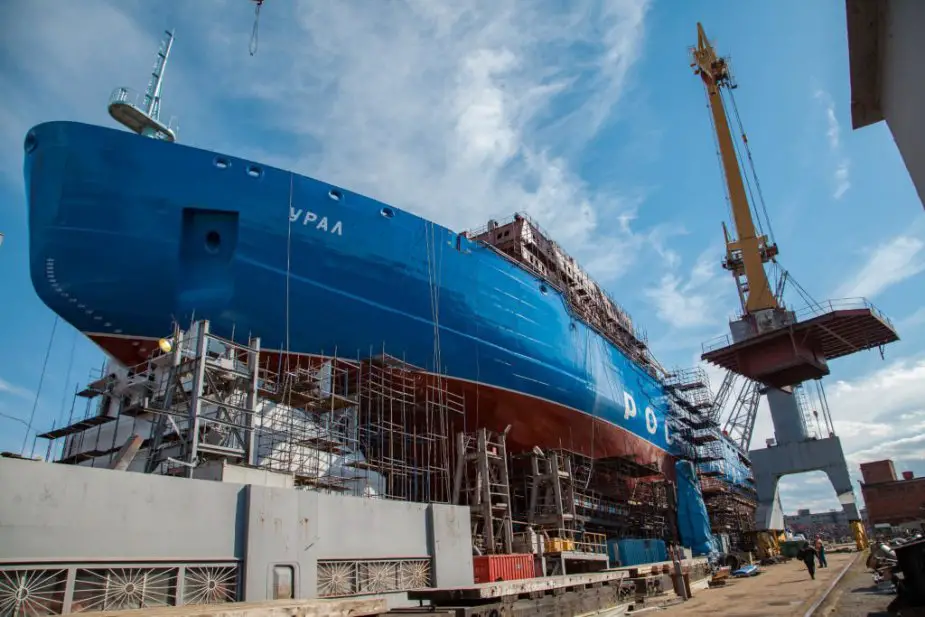According to information published by Tass on November 17, 2022, the second serial Project 22220 nuclear-powered icebreaker Ural built by the Baltic Shipyard will be delivered to Russia’s Atomflot Company at the end of November.
Follow Navy Recognition on Google News at this link
 Russian Project 22220 icebreaker Ural. (Picture source: Mtdata)
Russian Project 22220 icebreaker Ural. (Picture source: Mtdata)
“On November 22, the Baltic Shipyard will launch the icebreaker Yakutia. At the same time, the icebreaker Ural will be prepared for going to sea. At the end of the month, we expect it to join our enterprise,” Irlitsa said.
According to his presentation, the acceptance report for the icebreaker Ural is scheduled to be signed by Atomflot on November 29.
Konstantin Stasyuk, deputy director of the Northern Sea Route projects implementation department and head of the Northern Sea Route infrastructure development department at the Rosatom State Corporation, added that the construction of two more serial icebreakers was currently underway, namely, the Yakutia and the Chukotka, which are due to be delivered to the customer in 2024 and 2026, respectively. The localization of their construction equals 96%.
The Ural is the third Project 22220 icebreaker built by the Baltic Shipyard for the Atomflot Company. The Ural was laid down on July 25, 2016 and floated out on May 25, 2019. The press office of the Baltic Shipyard (part of the United Shipbuilding Corporation) said in October that the Ural had started its sea trials.
Project 22220 versatile nuclear-powered icebreakers are the largest and most powerful icebreakers in the world. Their main task is to provide year-round navigation in the Western region of the Arctic. Vessels of the type are expected to make up the mainstay of Russia’s civil icebreaking fleet in the imminent future.
About Northern Sea Route and icebreaking fleet
The Northern Sea Route development plan has been approved until 2035. A total of 1.8 trillion rubles ($29.8 billion) is planned to be allocated from different sources for its implementation.
Earlier, Russian President Vladimir Putin said that Russia had and was building advanced icebreakers for the further development of the Northern Sea Route as a powerful transport corridor of national and global importance with year-round navigation.
Minister for the Development of the Russian Far East and Arctic Alexei Chekunkov said that the construction of six more icebreakers was necessary to ensure a cargo flow of 200 million tons along the Northern Sea Route by 2030.
The Northern Sea Route is the shortest water route between the European part of Russia and the Far East. It has a length of about 5,600 km. It is completely located in the territorial waters and the exclusive economic zone of Russia, which is especially important in the face of external sanctions pressure, when the supply chains are disrupted.



